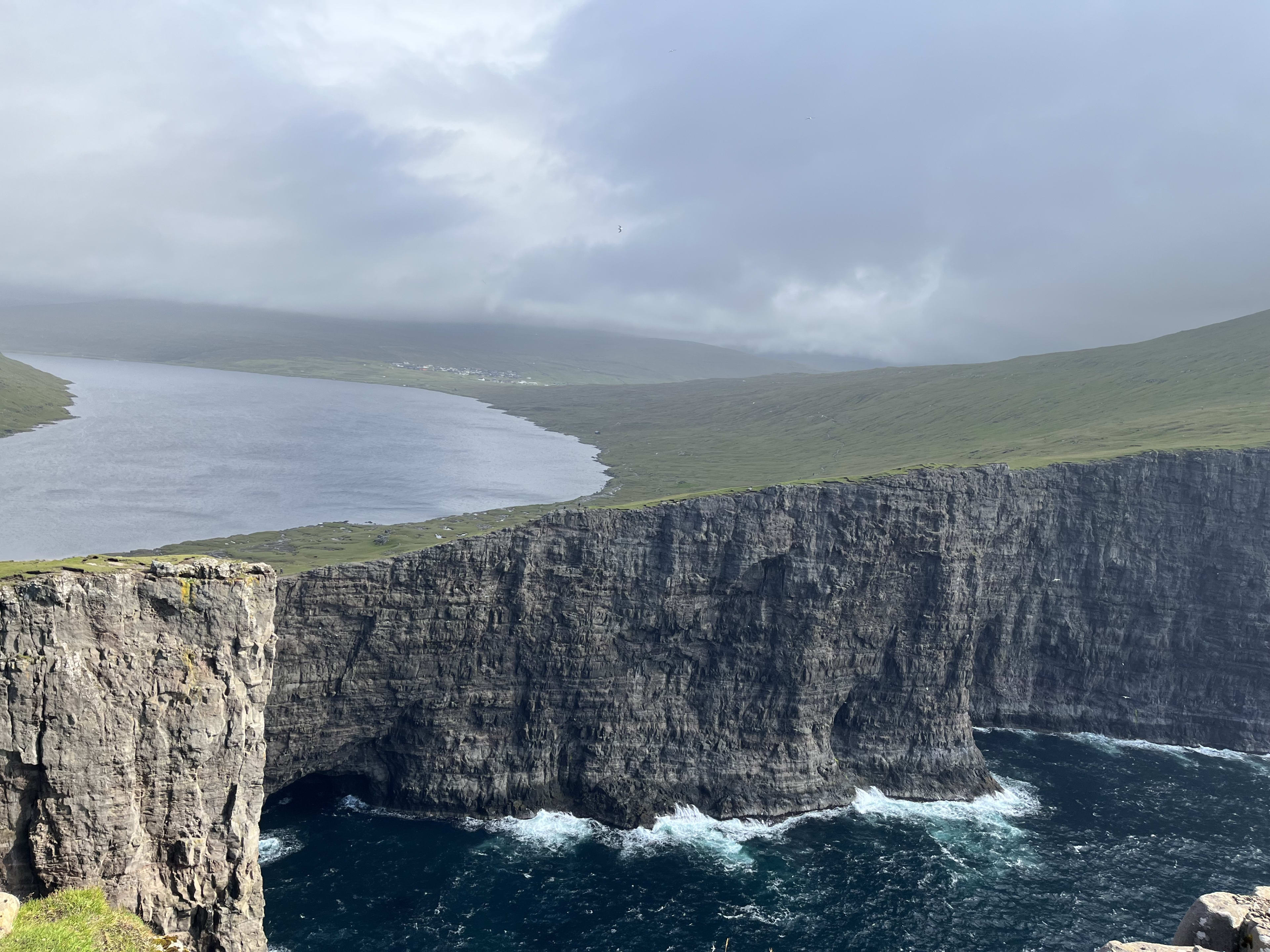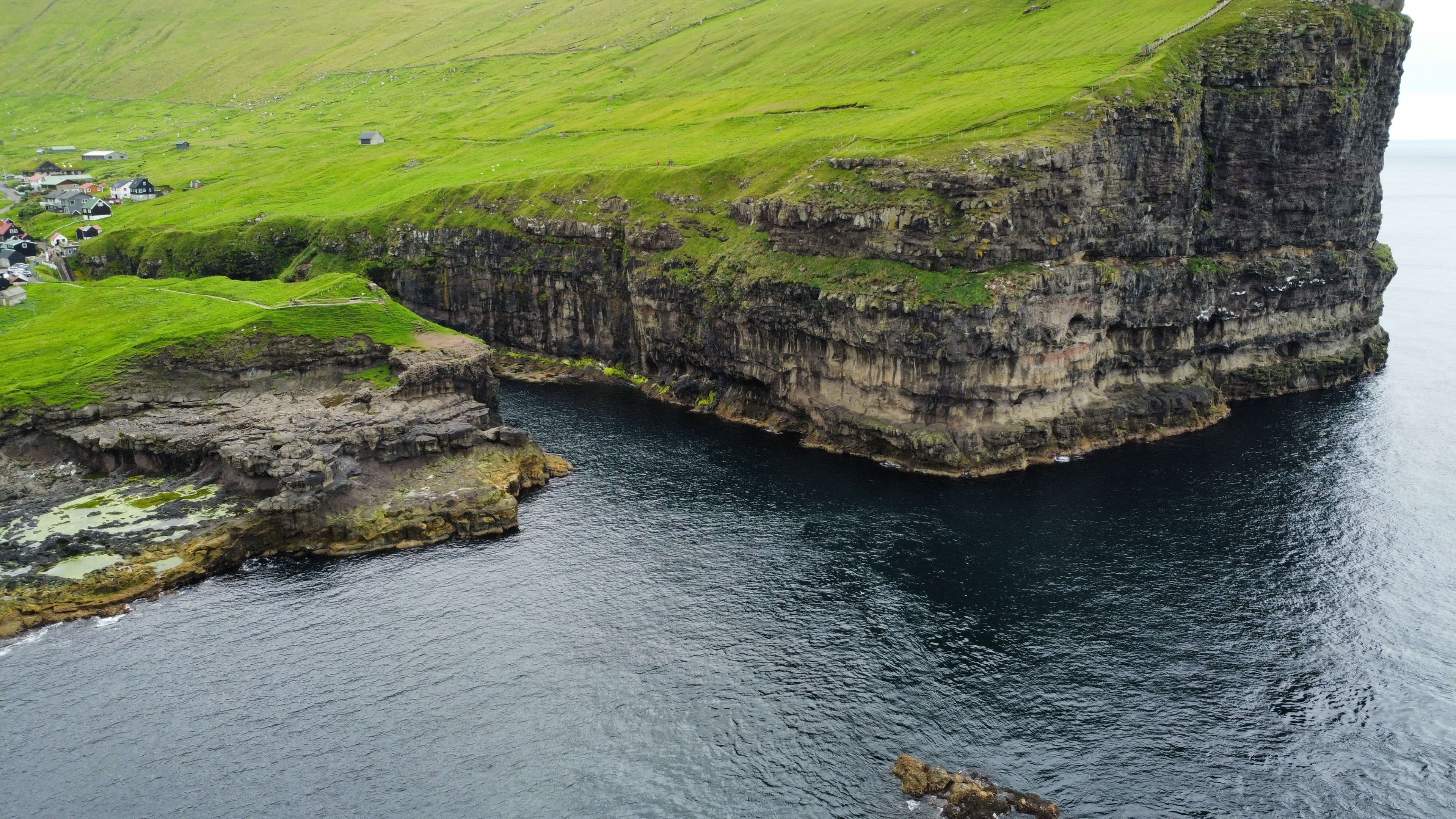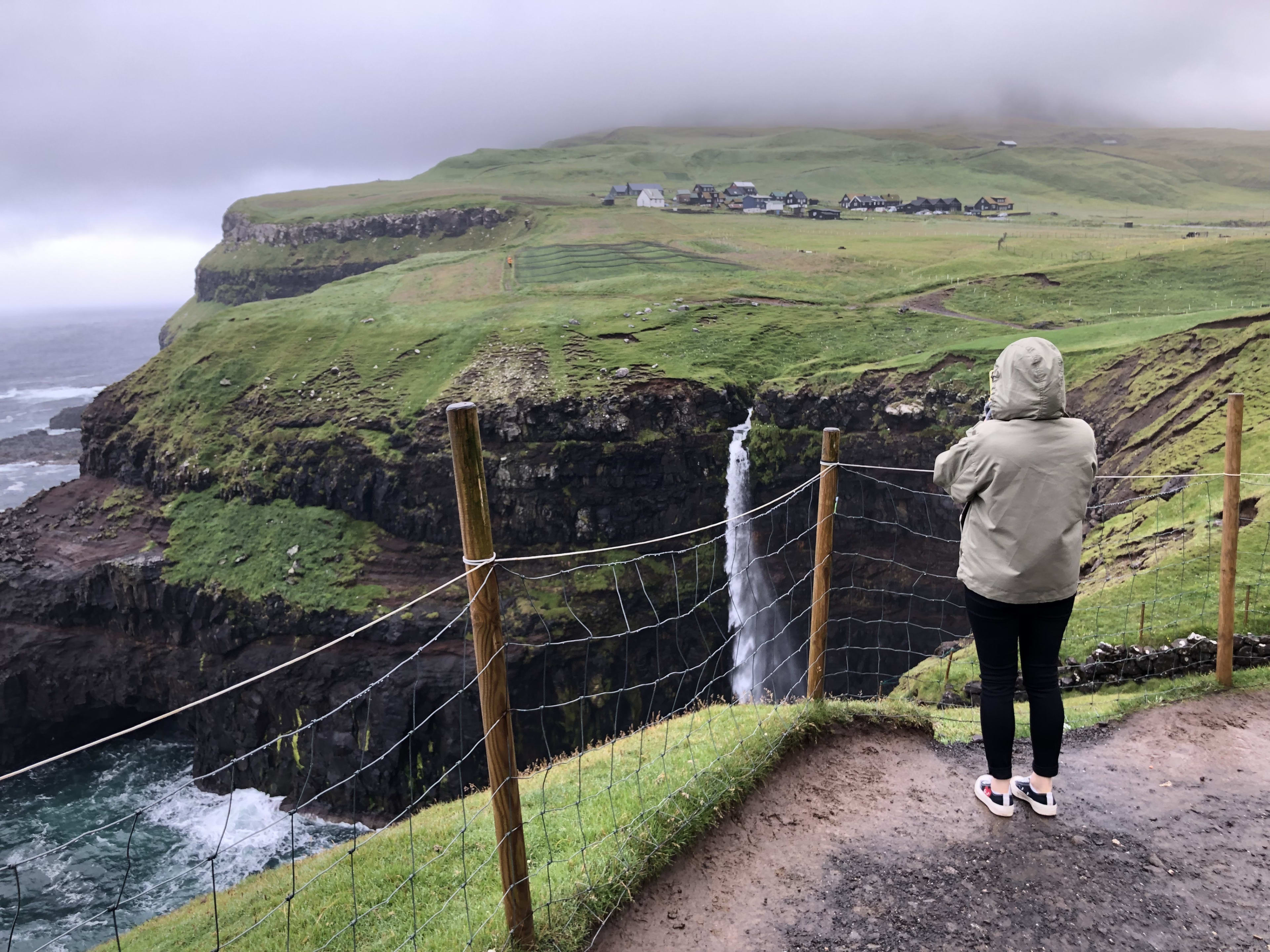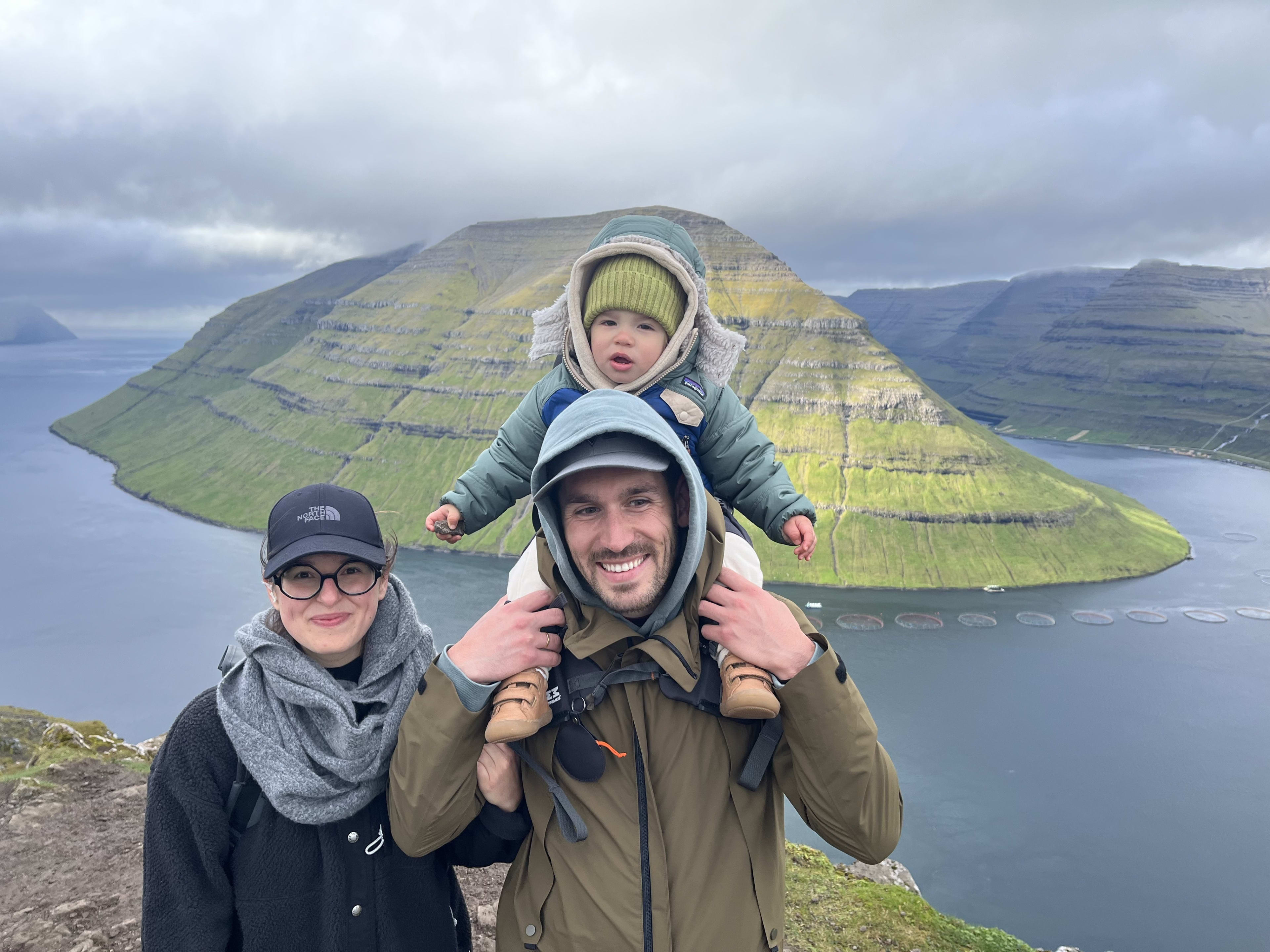Discover the Faroe Islands and their incredible activities

The Manawa team recently explored the Faroe Islands and immediately became fans of this exceptional destination! Combining wilderness, exciting adventures and accessibility from major European cities, the Faroe Islands offer a unique experience. Whether you're a seasoned adventurer or a family with a baby, these islands have it all. In this article, we share our experiences and advice to inspire you to discover these fascinating islands and enjoy some unforgettable activities.
Find out everything you need to know to plan your visit to the Faroe Islands and make sure you don't miss out on any of the best activities in these magical, breathtaking landscapes!
The Faroe Islands: a natural setting in the heart of the Atlantic
The Faroe Islands are an archipelago located in the North Atlantic, between Iceland and Norway and above Scotland. Made up of 18 volcanic islands, this autonomous Danish territory is known for its grandiose landscapes and impressive biodiversity. Although populated by only around 50,000 inhabitants, the archipelago offers a rich cultural and historical heritage, influenced by Scandinavian and Celtic traditions.
The archipelago is renowned for its incredible hiking trails, which take in some of the most unique landscapes in the world, but there are plenty of other activities to explore the Faroe Islands even further!
Discovering the main islands
- Streymoy: the main island, home to the capital Tórshavn. Known for its picturesque villages such as Kirkjubøur and impressive views from Risin Mountain and Kellingin.
- Eysturoy: famous for its spectacular scenery and underwater tunnels. The highest point is the mountain of Slættaratindur, the highest peak in the Faroe Islands.
- Vágar: famous for its magnificent lakes and the famous Múlagljúv waterfall. It is also the site of the main airport.
- Sandoy: famous for its white sandy beaches and charming villages, ideal for more leisurely walks and cultural discoveries.
- Kalsoy: nicknamed the island of the trolls, with its impressive landscapes and iconic lighthouses.
- Kunoy: famous for its rugged mountains and lush vegetation. The island is a popular hiking destination.
- Bordoy: home to Klaksvík, the second largest town in the Faroe Islands, and famous for its mountainous landscape.
- Viðoy: the most northerly of the islands, renowned for its sheer cliffs and panoramic views.
- Svínoy: a small island with a rich Viking history and unspoilt countryside.
- Fugloy: famous for its cliffs where seabirds nest. It is the most isolated island in the Faroe Islands.
- Nólsoy: just opposite Tórshavn, famous for its birdlife, including the largest puffin colony.
- Hestur: a small island to the south-west of Streymoy, famous for its sea caves and cliffs.
- Koltur: the smallest inhabited island, known for its wild nature and traditional agriculture.
- Skúvoy: famous for its seabird colonies and its historical link with Faroese hero Sigmundur Brestisson.
- Lítla Dímun: the smallest of the sheep-inhabited islands, known for its difficult access and distinctive shape.
- Mykines: renowned for its rich birdlife, particularly puffins, and its iconic lighthouse.
- Stóra Dímun: a small island inhabited by just 2 families, known for its wild nature and rugged landscapes.
- Suðuroy: the southernmost of the islands, with spectacular cliffs and a rich local culture.
Ólavsøka: National Day
Ólavsøka is the bank holidays of the Faroe Islands, celebrated on 28 July in honour of Saint Olaf, the eleventh-century Norwegian king. It is a major cultural event with parades, concerts, traditional dances and festivities in Tórshavn. It's the perfect opportunity to discover the local culture and experience the festive atmosphere of the archipelago.
A promising future
The Faroe Islands are not yet a major tourist destination, but this is rapidly changing. After our visit, we are convinced that they will become a must-see destination in the next few years, thanks to their breathtaking scenery and unique activities.
How to get to the Faroe Islands
By plane
Atlantic Airways, the national airline, offers direct flights from several major European cities:
- Copenhagen: approx. 2? hours' flight time.
- Reykjavik: approx. 1? hours' flight time.
- Bergen: approx. 1h20 flight.
- Paris: approx. 3? hours' flight with a connecting flight, usually to Copenhagen or Reykjavik.
The Faroe Islands' airport, Vagar Airport (FAE), is located on the island of Vágar. It is modern and offers convenient services for travellers, but is relatively small compared with the major European airports.
By the sea
Ferries operated by Smyril Line link the Faroe Islands with Iceland and Denmark. The main crossings are :
- From Hirtshals (Denmark) to Tórshavn: around 36 hours with a stopover in Seyðisfjörður in Iceland.
- From Seyðisfjörður (Iceland) to Tórshavn: around 18 hours.
You can make the crossing with a car, camper van or even a bicycle. The ferries are equipped to carry vehicles, so you can explore the Faroe Islands at your own pace.

When should you visit the Faroe Islands?
Spring (March-May)
Spring marks the return of the seabirds and the start of the wildflower season, perfect for photography and nature lovers.
- Average temperature: 5-10°C
- Clothing: mid-season clothing, windproof and waterproof.
Summer (June-August)
Enjoy long, sunny days and the ideal time for watching puffins and other seabirds. It's also the best time for outdoor activities such as hiking and kayaking.
- Average temperature: 10-15°C
- Clothing: light, waterproof clothing with several layers. The days are long!
Autumn (September-November)
The landscapes are tinged with vibrant colours, perfect for photos, and you can still enjoy outdoor activities while avoiding the high season.
- Average temperature: 5-10°C
- Clothing: warm, windproof clothing.
Winter (December-February)
Although colder and wetter, winter offers a magical atmosphere, with opportunities to see the Northern Lights and discover picturesque villages under the snow.
- Average temperature: 0-5°C
- Clothing: very warm, waterproof clothing and a base layer for cold temperatures and wet conditions.
Getting around the Faroe Islands
Rent a car
We strongly recommend renting a car to explore the islands at your own pace. We used Rent.fo, a reliable local rental company with a wide range of vehicles adapted to Faroese road conditions. Underwater tunnels, such as the one at Eysturoy with the world's only underwater roundabout, make it easy to travel between the islands. Tolls are relatively high, but allow quick and easy access to the various islands.
- Size of the archipelago: the Faroe Islands cover an area of around 1,400 km², with journeys from Vágar airport to the capital, Tórshavn, taking around 45 minutes by car. Crossing the archipelago from east to west takes 2 hours, thanks to easy, perfectly maintained roads.
Public transport
Local buses and ferries serve the main islands. However, these options are limited and may not cover all the major tourist sites. Car hire remains the best option for maximum flexibility.
How much does it cost to come to the Faroe Islands?
Flight
- Average fares: EUR 200 to 400 for a return ticket from the main European cities. Prices may vary according to season and departure city.
Hosting
- Average cost: EUR 150 to 250 per night for comfortable accommodation. Hostels and holiday rentals offer more economical options. It is advisable to book in advance due to the limited supply.
Catering
- Average cost: EUR 20 to 40 per meal per person in a restaurant. Supermarkets are a more affordable alternative for home-cooked meals.
Comparison
Compared with Iceland, Norway or Scotland, the Faroe Islands are slightly cheaper in terms of accommodation and food, but flight costs can be higher in high season.
Things to do in the Faroe Islands
The Faroe Islands offer an impressive range of outdoor activities, ideal for nature lovers and adventure enthusiasts.
Boat trip to see the puffins and the cliffs
Take a boat trip from Tórshavn, Sørvágur or Vestmanna to see the famous puffins and other seabirds nesting on the coastal cliffs. These excursions will also allow you to discover the spectacular scenery of the cliffs and sea caves.
Diving and snorkelling
Explore the crystal-clear waters around the islands to discover fascinating marine life. TheNorth Atlantic Diving school, based in Tórshavn, offers dives and snorkelling sessions at the Faroe Islands' best spots, offering breathtaking views of the local underwater wildlife.
Hiking
The Faroe Islands are a hiker's paradise. Some of the most famous trails require a permit or payment for access, while others, such as Klakkur, are free.
- Risin and Kellingin: these iconic mountains offer spectacular views and are among the most popular for hiking enthusiasts.
- Lítli Dímun: a challenging but rewarding hike with breathtaking views.
- Gásadalur: famous for its breathtaking views of the Múlagljúvur waterfall.
- Klakkur: located above Klaksvík, this hike is free and offers magnificent views.

Watching seals and other animals
Join guided tours to observe seals and other marine animals in their natural habitat. These excursions are often organised from Tórshavn or Klaksvík and offer an immersive experience of the local wildlife.
Underwater tunnels
Discover the impressive network of underwater tunnels linking several islands. The Norðoyatunnilin tunnel and the famous Eysturoy underwater roundabout are unique feats of engineering. Note that the crossing can be expensive.
Horse riding
Explore the breathtaking scenery of the Faroe Islands on horseback with several local stud farms. Rides are often on Icelandic horses, and you can even meet and ride the last remaining Faroese horses with Fjallaross near Tórshavn, who are working hard to preserve this unique species.
Abseiling and Tyrolean traverse
For thrill-seekers, abseiling and zip-lining offer breathtaking views of the surrounding countryside. Abseiling down waterfalls is a particularly impressive way to discover the power of these natural wonders.
Sea kayaking and rowing
Paddle through the fjords for an immersive experience of the Faroe Islands' seascapes. Numerous guided sea kayaking excursions are available throughout the archipelago, offering views of animals, cliffs, waterfalls and caves. Rowing is also popular with the locals, and you'll find several options for practising this sport on site.
10-day itinerary in the Faroe Islands with a baby
Days 1 to 4: Discover the island of Vágar
Vágar is the island where the Faroe Islands' airport is located, so you'll arrive here directly by plane. This island, although small, is full of fascinating sites. We chose to spend 4 days there and were able to explore it easily, even with our 1-year-old baby. Here are our must-sees:
- The village of Gásadalur and the Múlafossur waterfall: we visited this iconic waterfall twice: once under clear skies, and a second time after the rain, when it was even more impressive. Whatever the weather, this waterfall is well worth a visit.
- Slave Cliff hike (Trælanípa): this hike, although not free, is a must. The trail, which is easy to access, took us around 3? hours round trip, with our baby on our back. The view of the lake suspended above the ocean and the verticality of the cliffs are breathtaking. Leave early (we started at 7.30am) to enjoy this magical place in complete tranquillity.
- Walk to the "Witch's Finger" at Sandavágur: more than a hike, this is a pleasant walk with a breathtaking viewpoint at the end, weather permitting. On the way back, take a break at the café/restaurant Fiskastykkið // Úti á Gjógv, a typically Faroese place, where the coffee, waffles and fish soup are delicious. Please note that the café is not open every day.
- Boat trip from Sørvágur: unfortunately, the weather didn't allow us to make this trip, but it is possible to take a boat trip to the island of Mykines and see the famous puffins. That's for another time! If you're more lucky, check out Sørvágur's activities on Manawa.

Days 4 to 7: exploring Streymoy and Eysturoy
These 2 islands are linked by a free bridge, with no underwater tunnel to pay for, which makes it easier to get around. We stayed in Argir, near the capital Tórshavn, and explored the 2 islands on day trips.
- Tórshavn, the capital of the Faroe Islands: the largest city in the archipelago is well worth spending some time in. The architecture is charming, especially in the parliament district. Our favourite: the local Breyðvirkið bakery, not to be missed! Many activities start from the capital. Find out more about Manawa's activities from Tórshavn.
- Scenic Route 50: this spectacular road offers breathtaking views of the islands. Stop off at the Norðadalsskar viewpoint for a breathtaking view. For animal lovers, a visit to Fjallaross, where you might meet the Faroese horses, is a must.
- Vestmanna boat trip: discover the puffins and cliffs of Vestmanna on this boat trip. Accessible even with a 1-year-old baby thanks to a sheltered part of the boat, this is an affordable activity offering stunning scenery.
- Tjørnuvík, the Faroe Islands' surf spot: this picturesque little village is a rare gem. Its black sand beach, Viking ruins and surrounding waterfalls create a unique atmosphere. Although we weren't able to surf because of the weather, the place is perfect for a relaxing day out.
- Gjógv - Our favourite: this village north of Eysturoy is a must-see. The puffins take to the air from the cliffs, which you can admire free of charge from Crown Princess Mary's Bench. The natural harbour, breathtaking views and tranquillity of the area make it a real gem. To reach Gjógv from Tórshavn, a stop at Sjógæti in Norðskáli for fish and chips is highly recommended, before continuing on to Eiði to take the scenic route under Slættaratindur.
Days 7 to 10: Klaksvík and the northern islands
The northern islands around Klaksvík are a haven of tranquillity, even wilder than other parts of the Faroe Islands. Although we didn't do the famous Kallur Lighthouse hike because of the verticality of the path for our baby, we loved this area.
- Free Klakkur hike: accessible and offering 360° views over Klaksvík, Kunoy, Kalsoy and Eysturoy, this hike, although slippery, can be completed in 2 hours with a baby on your back. The view from the summit is unforgettable.
- The hidden forest of Kunoy: after several days in the Faroe Islands, we were missing the trees. Discovering this little forest hidden beneath a waterfall on the island of Kunoy was a breath of fresh air.
- Viðareiði, the most northerly village: the road to Viðareiði is a journey in itself, passing through long, free tunnels through the mountains and offering breathtaking views. Although we didn't do the Villingardalsfjall - Enniberg hike, simply walking and picnicking in this remote village was an unforgettable experience.

Conclusion: an unforgettable destination!
Our stay in the Faroe Islands was an incredible experience. We highly recommend this destination to outdoor and adventure enthusiasts. With its spectacular scenery, diverse activities and warm welcome, the Faroe Islands are a perfect choice for a memorable holiday. Don't hesitate any longer and plan your trip to experience this unique adventure!
To help you, discover all the activities available in the Faroe Islands on Manawa!